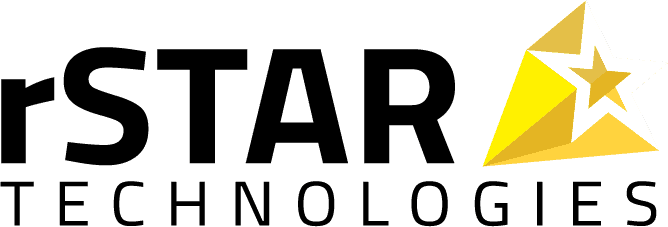This blog is the second entry in rSTAR’s on-going blog series, The IT Leader’s Pain Management Guide. Each week, we’re exploring one of the top challenges facing IT directors, CIOs, CTOs, and other technology leaders, diagnosing each problem in full and exploring the industry’s most popular and effective treatment options.
To read other entries from The IT Leader’s Pain Management Guide, click here!
Table of Contents
Diagnosing the Pain – Why There’s Never Any Time for Strategy
Innovative IT leaders know that a productive, organized department backed by great planning and goal setting can be a true business driver, not just a support system. Achieving that level of operational success is incredibly challenging, however, because the realities of day-to-day life get in the way.
The fact of the matter is that, in most organizations around the country, IT professionals are swamped with support tickets, and each week brings a new challenge that must be addressed ASAP, at the risk of lost business or productivity. The second a fire is stomped out to the left, a new one pops up on the right. It can feel like an endless dance in which long-term departmental goals and team morale can easily go up in smoke.
While the first-line supervisors and IT managers focus on chipping away at the work of urgent tasks in front of them, the technology leaders who steer the ship and articulate the organizational vision risk becoming increasingly disconnected from what’s actually going on. As daily firefighting efforts divert the core team’s productivity away from planned initiatives and work toward long-term goals, the head and the hands of IT fall out of alignment.
Soon, the firefighting has become the job at ground level, while leadership is set up to deliver a great deal of bad news at quarter’s end. That’s how IT departments fall apart.
Pain Management Recommendations
In order to run a successful, strategic IT department, you need to be able to limit (or, ideally, eliminate) daily firefighting for your core in-house team. Preserving the productivity of those assets is crucial to achieving short- and long-term departmental goals, so you need to find a way to pass that low-level work somewhere else, without sacrificing quality of service.
Let’s pause to take a look at a few strategies that growth-minded IT leaders are embracing to maximize the strength and potential of their core team by limiting their firefighting duties.
Leverage Artificial Intelligence to Free Up Human Intelligence
It wasn’t so long ago that every technology problem needed to be solved by a human support professional. Even self-service support for employees (like the famous “Have you tried turning it off and turning it back on again?”) required a call down to IT, intruding into those professionals’ abilities to pursue their strategic, big-picture work. Thankfully, that’s just not the case anymore.
As most tech leaders know, the capabilities of AI have exploded over the last few years. However, while we’ve gotten good at leveraging that technology for accounting or customer lead nurturing, very few IT departments have thought about how AI could streamline their operations and salvage potentially thousands of previously lost work hours each year.
Chatbot technology provides IT departments with a deployment-read service ticket sorting and diversion solution that significantly cuts down on daily firefighting. Instead of incoming tickets from organizational employees or customers doing directly to designated members of your IT team, they are processed (as possible) directly at the point of service by the chatbot.
That means employees can be walked through system updates, accessibility issues, and self-service support in a way that addresses their needs faster than ever before without taxing IT professionals. Similarly, customers can gain navigational assistance, access company knowledge base resources, or connect with answers to their basic or frequently asked questions in a responsive, satisfying way that doesn’t eat into any human productivity.
Thanks to machine learning, those chatbots will only get faster and better at what they do over time, noticing emerging trends and providing IT leadership with powerful backend data that can help guide your planning or improve you understanding the daily needs of customers and workers in your organization better.
Call in Some Professional Firefighters
Of course, the traditional way to put out a fire is by calling in the fire department. While it’s unlikely your town has a crack team of IT problem-solvers a call a way, you can still get the high-quality professional support you need through staff augmentation.
Using staff augmentation, you can contract the services of proven IT professionals at a daily, weekly, or even hourly rate using funds from your departmental budget. That means you increase your headcount to get more done without actually increasing your headcount while leveraging the power of some of the industry’s leading IT management consulting companies.
Depending on your specific needs, you could contract a professional fire brigade to handle your low-level support needs, or you could maintain your internal support structure and bring in some experts from the outside to help drive the work on your long-term initiatives. Either strategy can be successful, but as a leader, it’s important for you to have a strong read on your current team’s strengths, weaknesses, areas of skill, and limitations.
You can also use staff augmentation to beef up your own leadership’s skills and capabilities by bringing in subject area experts who can provide you and your supervisors with IT management training. In this way, you can bring in the right leader to clarify your short-term situation, while also improving the internal management’s long-term strength through IT management consulting.
What’s the first step?
In order to stop the pain of constant firefighting, IT leadership must begin by building a strong understanding of what daily operations look like, both in an ideal, strategic scenario and in reality. Only with both of those pictures clearly articulated can you really understand which specific strategies, approaches, or solutions will be most impactful and break the cycle to get your department back on track toward growth and innovation.
Building that picture can be a little tricky, especially if daily operations and leadership vision have already begun to creep away from each other in your organization. In those situations, bringing in an outside consultant can be incredibly valuable to analyze your operations, benchmark your pain points, and help you articulate the strategies and connect with the technologies you need to create a thriving, functional IT department.
Enterprise IT Pain Management from rSTAR
rSTAR is one of the industry’s leading system integrators. We help IT executives in asset-intensive industries fight their day-to-day fires and leverage evolving technology to provide measurable increases in workforce efficiency. Our IT management solutions and consulting power have earned us a reputation as one of the industry’s fastest-growing innovators.
We’ve spent the last two decades building a proven and impactful team of project leaders, developers, architects, and other experts who have the collective skills, knowledge, and enthusiasm necessary to solve just about any IT challenge. If you’re a tech leader experiencing pain, contact rSTAR today, and we’ll set you up with a free Tech Enablement and Goal-to-Value Realization Blueprint session to help you describe, diagnose, and treat your daily pains.






